Tire noise that’s noticeable at highway speeds can often have the same cause as some noises that may be more noticeable at low speeds. Regardless, the noise from your tires is a symptom of an underlying problem.
Tire Noise At High Speed
Tire noise at high speed is often due to abnormal tire wear. Improperly aligned tires are the most common cause of uneven tire wear that causes excessive noise at high speeds.
Airflow through unevenly worn tire treads and the unusual angle the tread blocks contact the pavement and can make a loud and constant drone.
While unevenly worn tires are the most common source of road noise at higher speeds, it isn’t the only potential cause and we need to understand the root problem that causes all of the potential sources of unusually loud road noise.
Let’s take a closer look.
Humming Noise in Car Getting Louder with Speed
You might notice a humming tire noise getting louder as you go faster. Some tire noise is common, but when you have unusually loud tire noise, especially as you begin to drive more quickly, there may be a problem that needs to be fixed.
Tread Pattern Design
The humming noise might be a normal byproduct of your car tires’ tread design. But not all tires are as quiet as others. The pattern on your tread is precisely engineered to maximize your grip.
One of the more common side effects of less expensive tires is that they tend to produce more noise. If you recently purchased new car tires and decided on one of the lesser-known tire brands or purchased a set that cost significantly less than some of the other options, this could be the cause.
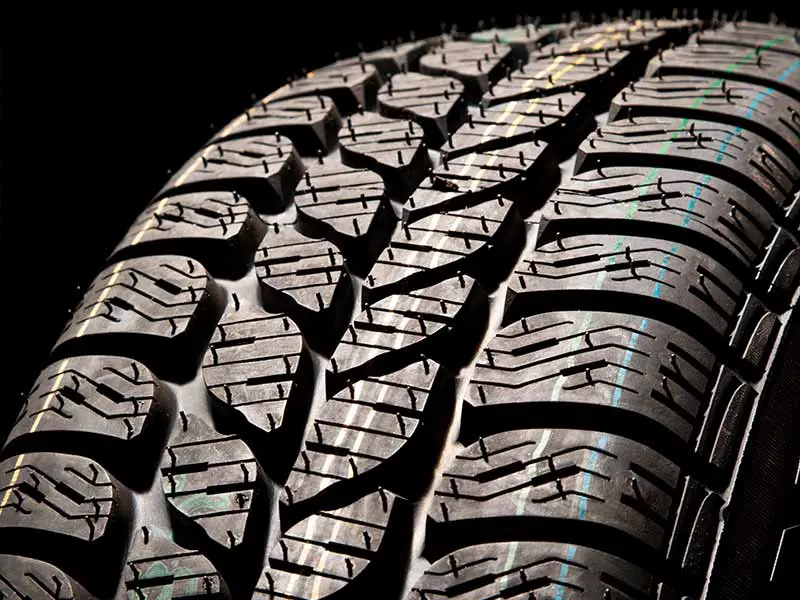
Uneven Tire Wear
One of the most common reasons for a humming sound coming from your tires is uneven tire wear. Tires should wear evenly across the tread pattern over time, and the wear should be consistent across tires on the same axle.
When your tread blocks don’t wear down evenly, they usually produce noise, which increases with speed.
Most of the problems we’ll discuss following this main issue are caused by uneven tire wear but can also be the direct cause of tire noise.
You’ll need to correct the root cause of the uneven wear and allow your tires time to wear down to become smooth again before the unwanted noise fades. You must replace your tires if the uneven tire wear is severe enough.
Be sure to correct the cause of the problem before buying new tires. If you don’t do so, you’ll end up in the same situation and prematurely wear out your tires.

Not Regularly Rotating Your Tires
A tire rotation should be done every 5,000 miles or so. It’s the best method for evening out the different wear patterns at each corner of your car or truck. Regular tire rotation is also usually required to maintain the manufacturer’s warranty on most tires.
Each tire doesn’t sit perfectly square with your vehicle and the road surface. Each position around your car or truck will be angled slightly to improve traction and stability. Because of this, even perfectly aligned tires usually wear slightly unevenly.
Evenly worn tires will provide a more quiet ride. Car tires that aren’t rotated regularly will eventually wear unevenly and not last for as many miles as possible, costing you money over the long term.
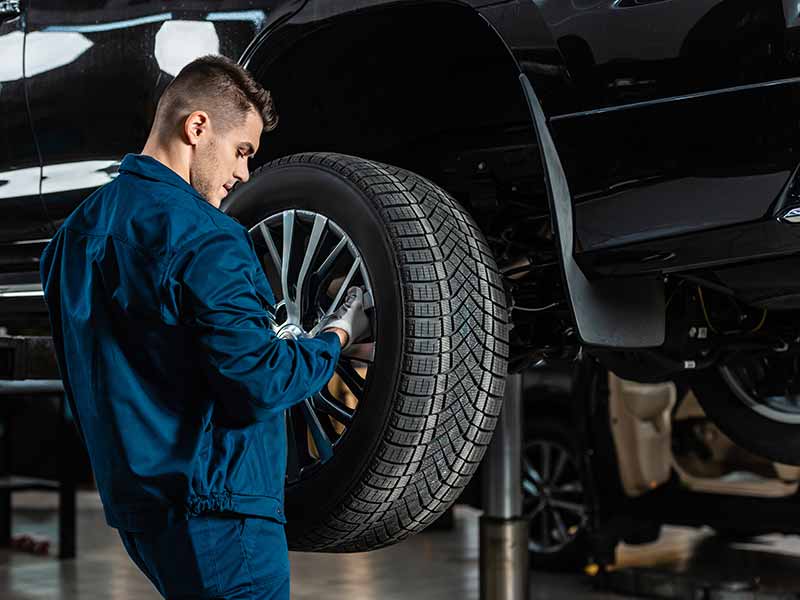
Poor Alignment
Alignment is another piece of routine maintenance that can help extend the life of your tires. Tire alignment refers to how aligned the tires are with the road, your other tires, and your vehicle.
If your wheels are out of alignment, the tires will not wear as evenly, and as we mentioned earlier, uneven wear is a common source of tire noise.
Misaligned wheels and tires drag slightly or wear more in some regions of the tire’s tread pattern than others.
Over time your alignment will drive slightly out of specification due to potholes, curb strikes, and suspension component wear and tear.
We recommend that an alignment service be performed every 10,0000 miles to correct minor alignment issues that build up over time.
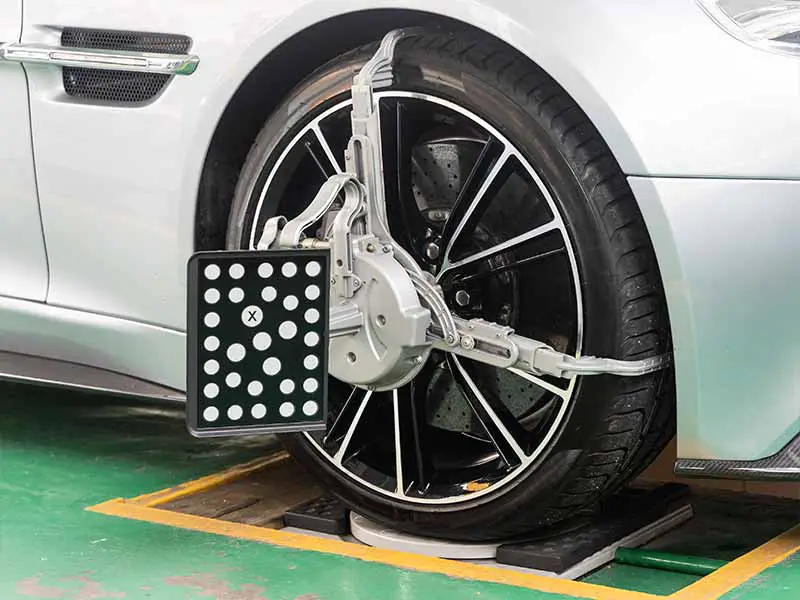
Improper Inflation Pressure
Regularly check the pressure in all four of your car tires. Keeping your tires at the recommended pressures will optimize your tires’ mileage, performance, stopping distance, and life.
If you’ve experienced a flat tire in the past, you’re familiar with the noise they produce at lower speeds. If your tires are slightly over or under-inflated, they may also make unwanted noise and cause uneven wear.
Check the pressure with a tire pressure gauge and use an air compressor to fill them up. Check the driver’s door jamb for the tire information sticker that tells you the correct inflation pressure for all four tires.

Out Of Balance Tire
Tire balance is a measure of how evenly distributed the weight of a tire is around the central point (your axle). By strategically adding weights around the rim, a tire expert can ensure your tires are properly balanced and spin smoothly.
It’s important to balance your tires every time you purchase new ones. It’s also suggested to rebalance your wheels and tires every 10,000 miles while having an alignment performed.
An out-of-balance tire will vibrate and wobble, which can create noise. You’ll also notice the vibrations in your steering wheel if the balance problem is with one of the front tires.
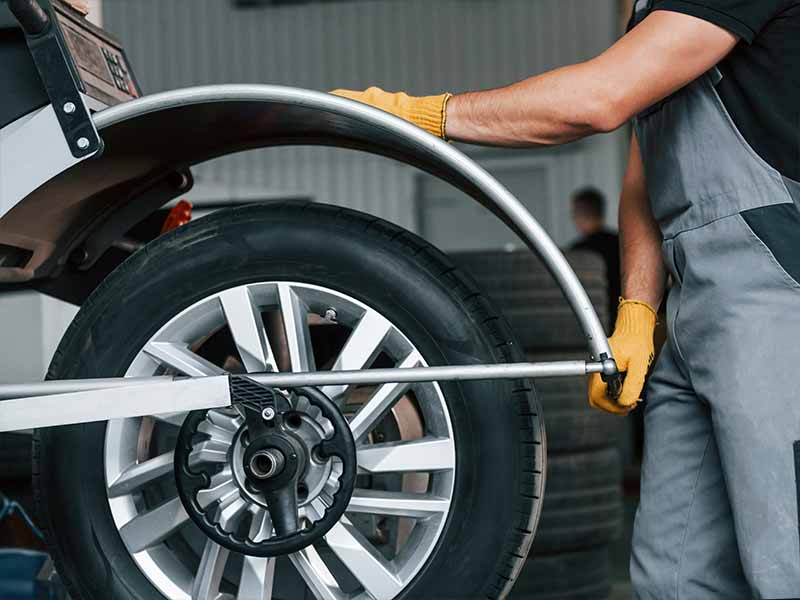
Certain Road Surfaces
Sometimes, it’s just a matter of driving over an uneven road. Certain road surfaces can create a loud humming as you drive over them at high speeds.
Be sure to pay attention to the roadway as you approach it. If you notice a line across its surface or a change in color before the humming starts, it’s likely from the road changing surface texture due to the use of different materials or construction processes.
Once you get off the road, check to see if the humming noise stops.
Why Are My Tires So Loud All of a Sudden
Maybe you’re driving along, and suddenly your car tires get loud. If this happens, it’s easier to diagnose the problem. It’s typically one of the following culprits:
Foreign Object Damage
Another common source of sudden tire noise is that you could run over a nail or other debris. If a foreign object gets stuck in your tire, you might hear it repeatedly hitting the road.
Don’t remove the foreign object, or your tire will immediately go flat. You’re also likely slowly losing air pressure. Head to your local tire shop to see if the puncture can be safely repaired or if you need to buy a new tire.
If a puncture is too close to the sidewall, it will not be able to be patched. The stresses that a tire goes through at the shoulders, where the tread meets the sidewall, make it impossible for a patch to hold air properly.
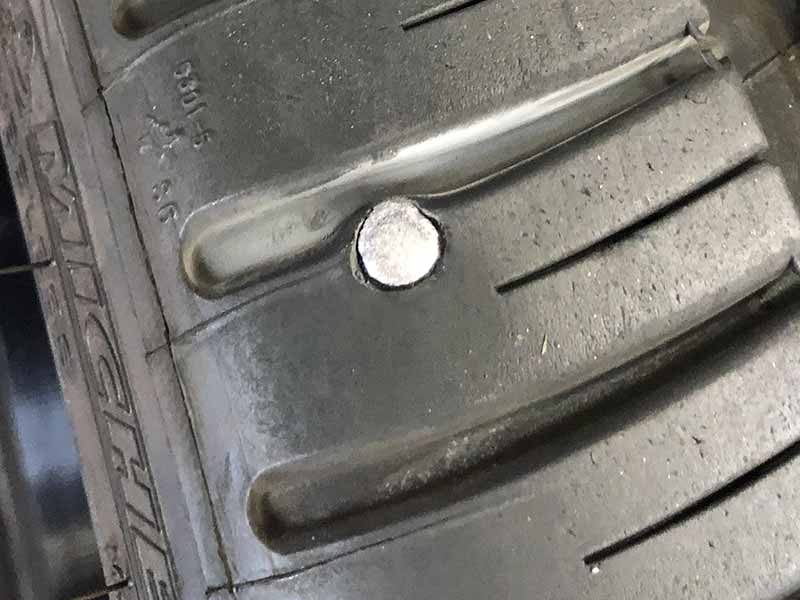
Belt Separation
Steel belts provide structure, strength, and shape to the rubber of your tires. Potholes and curb strikes can cause the steel belts within your tires to separate. When this happens, the tire loses its shape slightly and can make noise if the tread lifts from the structure underneath in one area.
Belt separation can not be repaired and will require replacing the damaged tire.
The untrained eye may not quickly notice the problem if it’s minor. Although, a tire professional can diagnose the problem and identify if the problem is belt separation or something else.
If you can easily spot that your tire is out of round, the tire damage is quite severe, and you may not want to drive on it even to get to the tire shop to replace it.
Sidewall Bubble
Another example of tire damage is a sidewall bubble. Sidewall bubbles are another sign of a broken steel belt or internal damage to the structure of your tire.
Sidewall bubbles are also quite dangerous and can easily lead to a catastrophic blowout.
It’s usually relatively easy to spot a sidewall bulge on the side of the tire facing outward. Sidewall bulges on the inward-facing sidewall are much more difficult to spot unless using a lift or removing the wheel from your car or truck.
If you discover a bulge in the sidewall of one of your tires, you’ll want to have it replaced as soon as possible.
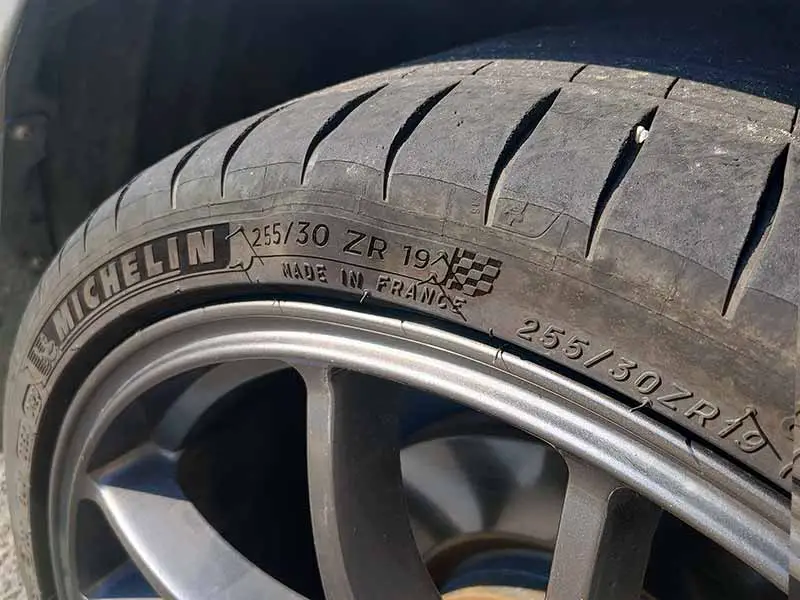
Wheel Damage
The wheels are the parts your tires are mounted onto and play an important role in adequately supporting the tire. If your wheel has been bent or suffered some other damage, it may have lost its perfectly round shape or become unbalanced.
Damaged wheels can sometimes be fixed if the damage isn’t too severe. Other times it requires completely replacing the wheel. It should be pointed out that bent wheels that have been straightened will weaken in the repaired area and are more prone to bending again.
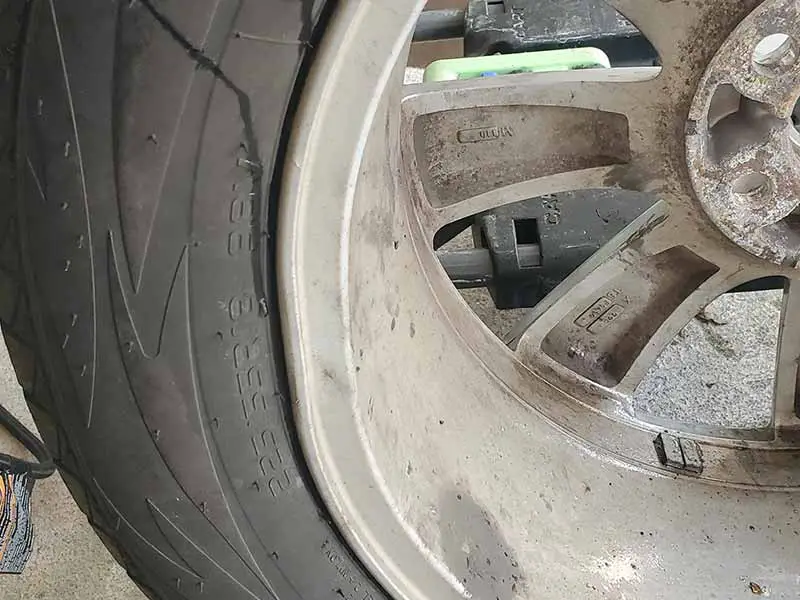
Non-Tire Possible Causes
The loud noise might have nothing to do with your tires. There are a few non-tire possibilities that you should consider:
Wheel Bearings
Wheel bearings ensure your tires rotate smoothly without making more noise or friction. When wheel bearings start to fail or get too old, they’ll create a squeaking or humming noise as you go faster.
A bad wheel bearing is a serious problem that should be addressed as soon as possible. Wheel bearing failure can be catastrophic at high speed. If you suspect the noise from your tires is a failing wheel bearing, have your mechanic check it out immediately.
CV Joints
If the rubber boot protecting your CV joints is damaged and allows water to get into the joint or the grease to fling out onto the drive shaft and suspension components, it will eventually fail. A bad constant velocity joint will usually make a clicking sound when turning.
CV joints usually don’t make noise when traveling in a straight line at high speed, but if it does, this is a sign that it is very close to a severe failure that could cause an accident.
Lug Nuts
Lug nuts keep your wheels firmly attached to your vehicle’s suspension. If the lug nuts are loose or over-tightened, then you may begin to notice a grinding noise or wobble-like sound. It’s possible you’ll also feel some vibrating the car through the seat or your steering wheel.
It should be obvious that ensuring your wheels stay attached to your hub is important. You’ll want to make sure the lug nuts are torqued properly. Lug nuts need to be tightened a certain amount. Too tight and they can cause brake rotor warping and too loose can cause them to back out or become damaged over time.
Resources
Below are some links you may find helpful when learning about tires
Final Thoughts
Regular and consistent tire maintenance will help reduce the chances of having to suffer through unusually loud tire noise. Tire rotation, proper alignment, and correct air pressure will extend tire life and reduce tire noise.
Keeping your tires cared for regularly will help identify problems early, keep your tires quieter, and save you money over the long term.
Good luck and happy motoring.




